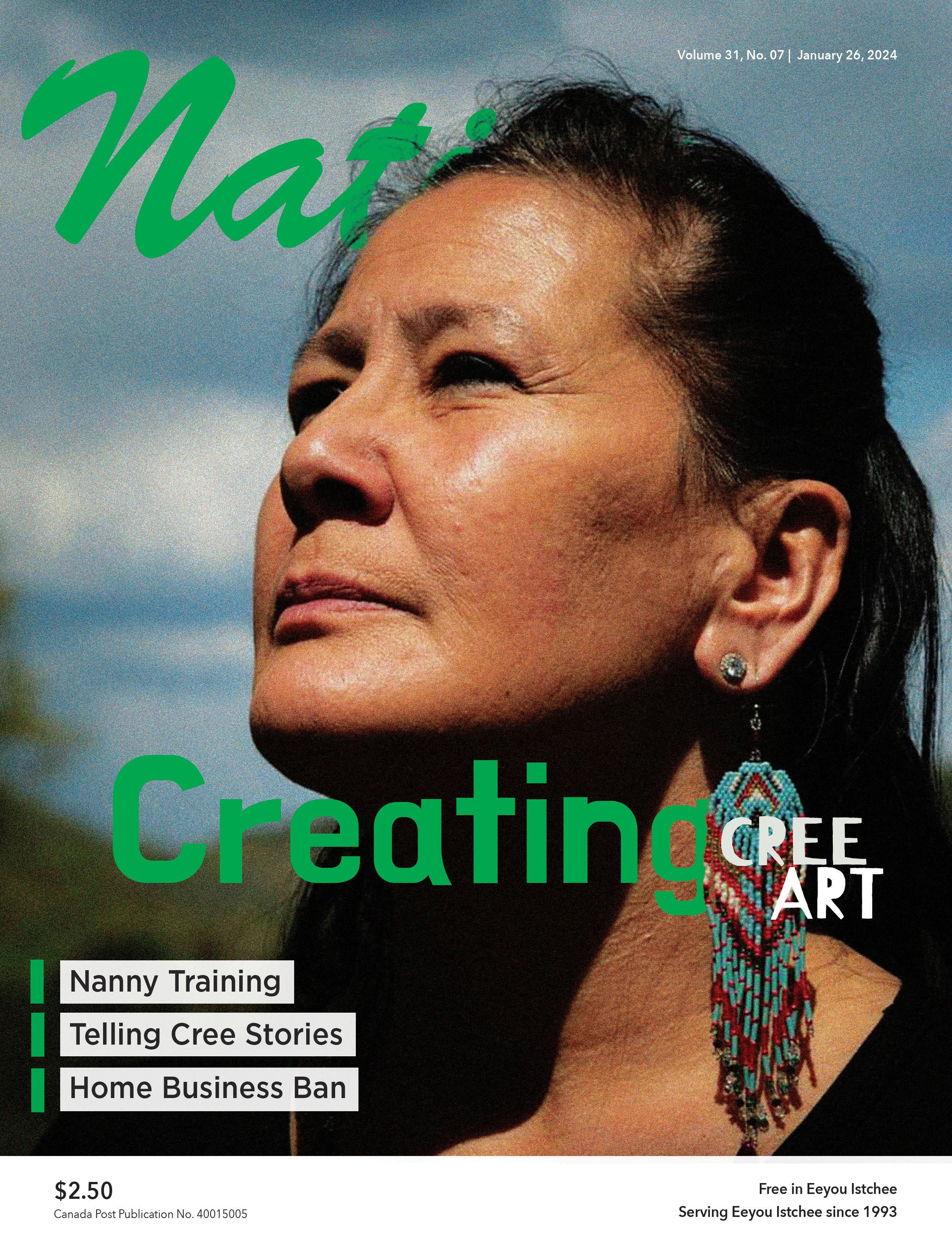


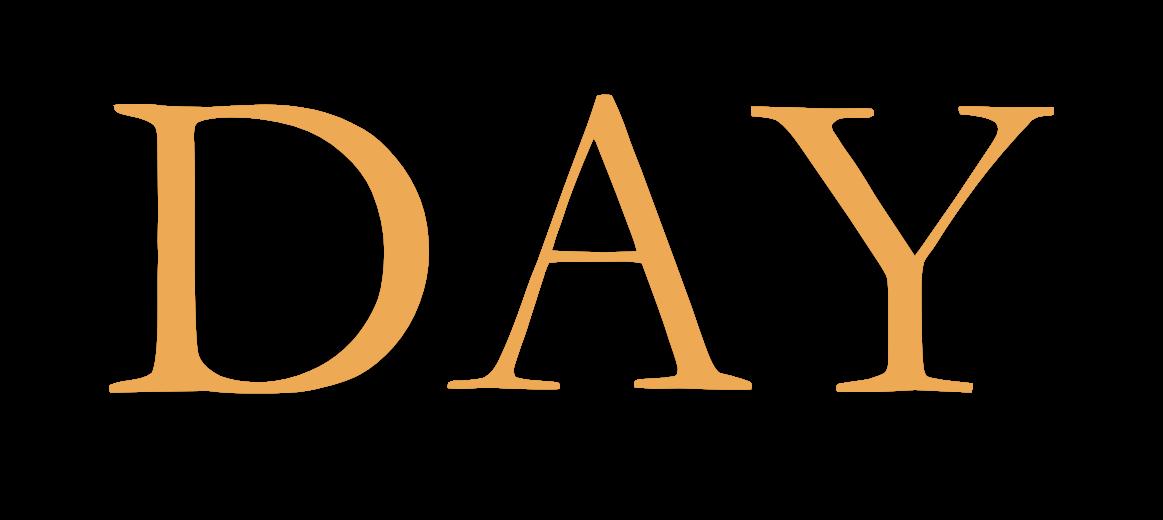
FEBRUARY 15, 2024
The Moose Hide Campaign is a response to the injustices and violence faced by too many women and children in Canada, particularly those who are Indigenous. Wearing the Moose Hide Pin is your commitment to honour, respect and protect the women and children in your life, work to end gender-based violence and take action towards reconciliation with Indigenous peoples.

CHECK YOUR MAILBOX!
Randomly selected mail boxes in Eeyou Istchee will be selected to receive a Moose Hide Pin early in February 2024
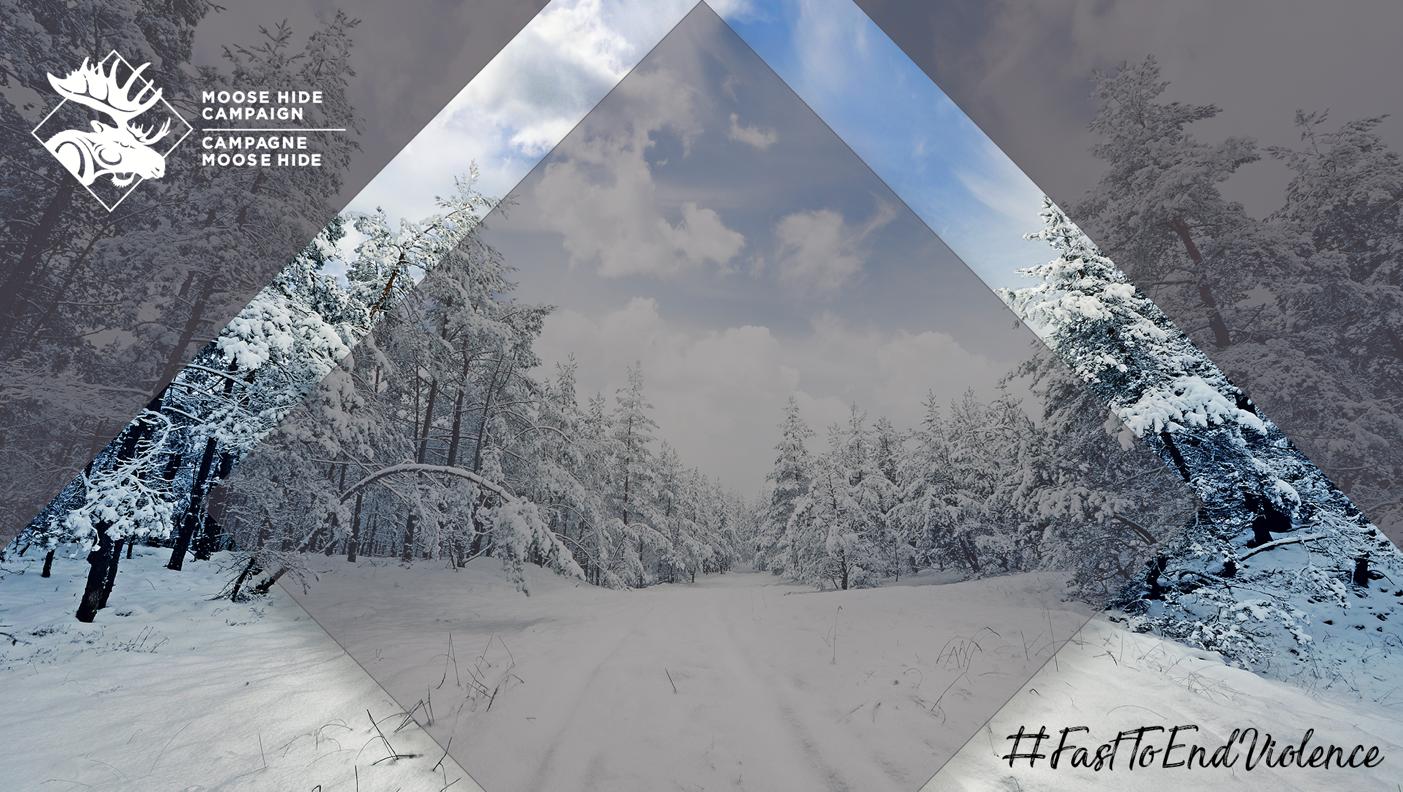




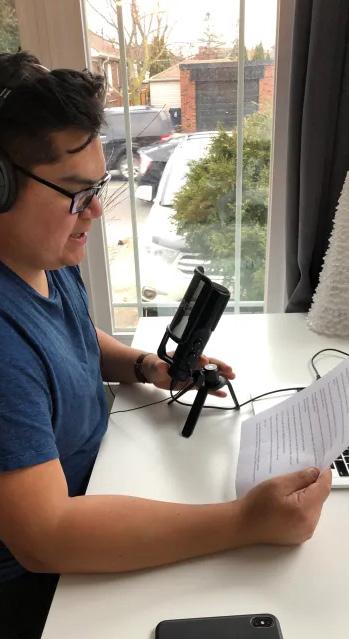




CONT ENTS Cree artists share their work 10 1 800 361-2965 1 800 661-5850 ᐅᕙᓂ ᐱᒋᐊᕐᐳᖅ ᓄᓇᕕᒃ Nunavik Starts Here RESERVATIONS 1 800 361-2965 ᖃᖓᑦᑕᔫᓂᒃ ᐊᑦᑕᑐᐊᖃᕐᓂᖅ CHARTERS 1 800 661-5850 ᐅᕙᓂ ᐱᒋᐊᕐᐳᖅ ᓄᓇᕕᒃ Nunavik Starts Here Shaping a narrative Seize the day Discussing passions and creativity with Paula Menarick and Deborah Ratt 20 16 Photo of & provided by Deborah Ratt EDITORIAL Home businesses and social housing NEWS Domestic service In a fragile state BRIEFS FEATURES Eeyou Istchee art Show up for yourself Voices of resilience PUZZLES REZ NOTES The white chicken of the north UTNS Make housing a priority in 2024 4 5 7 9 10 16 20 24 25 26 Community
Home businesses and social housing
Will Nicholls
Late night calls are something we expect here at the Nation , and recently, we received one about home businesses in social housing not being allowed. Besides being surprised by the news, we felt there was something wrong about this decision.
In Mistissini, Adels Restaurant would never have happened without the late Charlie Brian turning his home into a restaurant. There are others in Mistissini and other Cree communities who made their starts in this manner. A practice that is almost a Cree tradition that is now not allowed, and we all have to wonder why? Is it that the haves don’t like the idea of the have-nots joining their ranks? Is it that the Cree leadership doesn’t think that home businesses are part of the economic engines they envision for Eeyou Istchee? Or are there some other reasons we are not privy to?
Afterall permitting home businesses could contribute in a significant way to help some social housing households achieve self-sufficiency.
Have people forgotten that community development is mostly about individuals taking control of their future. It is also about fostering a sense of well-being for oneself and their community. In a world today with global changes and uncertain economic fortunes, is it not important for people to find ways to help themselves without relying heavily on others. A home business is one way to make this happen.
Home businesses can be integral parts of strategies for commercial development, tourism, natural resource development, and new business initiatives. Home businesses serve as an incubator for new businesses and as a training ground for first-time entrepreneurs. It is
within the home that they can experiment, try out new ideas, test new markets, and make sacrifices and choices that are not costly because of the low overhead costs associated with working at home.
It is also important to recognize that a significant number of home businesses are temporary. Some outgrow the space at home and move to a larger location, either renting or building a space for themselves and the business they created.
Of course, not all of them are successful. Home businesses close as the owner finds the business was not as successful as planned, new family or business opportunities emerge, or another direction is taken. But the debts incurred are minimal compared to having to take on the higher costs associated with starting outside the home.
Communities with a strong small business and entrepreneurship base tend to have decent retail facilities, a higher level of home ownership, less evidence of physical deterioration, better sanitation standards, and higher expenditures on education, recreation and religious activities.

As it stands now stopping home businesses gives little economic opportunity to those with financial problems and who may live in poverty. Also how far does this law or rule reach? What about those people who make beaded earrings, moccasins, moosehide mittens, crooked knives and other traditional items? They make them at home, and this is in legal terms a business.
What about the Buy, Sell, Trade meals offered over the internet? That is also a business as far the law is concerned. In Chisasibi, there are people who have convenience stores in their basements. Is the law different there or does the band council just turn a blind eye?
What about the bands who have problem collecting rent or mortgage payments, a home business could help with this?
In short, stopping home businesses in social housing is simply shortsighted and wrong in any Cree community. In most Cree communities all that is needed is 30 signatures to call a special community general assembly to address matters residents feel must be talked about and acted upon.



4 the Nation January 26, 2024 www.nationnews.ca
The Nation is published every two weeks by Beesum Communications EDITORIAL BOARD L. Stewart, W. Nicholls, M. Siberok, Mr. N. Diamond, E. Webb EDITOR IN CHIEF Will Nicholls DIRECTOR OF FINANCES Linda Ludwick EDITORS Lyle Stewart, Martin Siberok PRODUCTION COORDINATOR AND MANAGING EDITOR Randy Mayer CONTRIBUTING WRITERS S. Orr, M. Labrecque-Saganash, J. Janke, A. Nambiar, A. Coon-Come DESIGN Matthew Dessner SALES AND ADVERTISING Danielle Valade, Donna Malthouse THANKS TO: Air Creebec CONTACT US: The Nation News, 918-4200 St. Laurent, Montreal, QC., H2W 2R2 EDITORIAL & ADS: Tel.: 514-272-3077, Fax: 514-278-9914 HEAD OFFICE: P.O. Box 151, Chisasibi, QC. J0M 1E0 www.nationnews.ca EDITORIAL: will@nationnews.ca news@nationnews.ca ADS: Danielle Valade: ads@nationnews.ca; Donna Malthouse: donna@beesum.com SUBSCRIPTIONS: $60 plus taxes, US: $90, Abroad: $110, Payable to beesum communications, all rights reserved, publication mail #40015005, issn #1206-2642 The Nation is a member of: The James Bay Cree Communications Society, Circle Of Aboriginal Controlled Publishers, Magazines Canada Quebec Community Newspaper Assn. Canadian Newspapers Assn. Les Hebdos Sélect Du Québec. Funded [in part] by the Government of Canada. | www.nationnews.ca | facebook.com/NATIONnewsmagazine | Twitter: @creenation_news CMC A AUDITED Editorial by
In Chisasibi, there are people who have convenience stores in their basements. Is the law different there or
the band council just
a blind eye?
does
turn
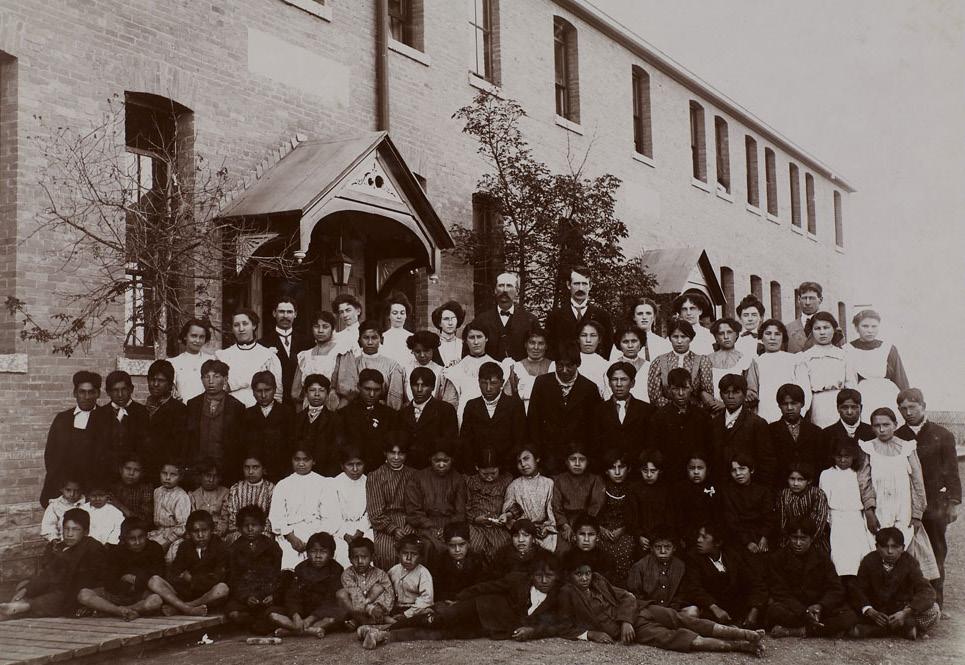
Between the 1920s and the 1960s, residential schools in Canada would train Indigenous girls to become domestic servants. Marlene Etapp Dixon, 73, was one such student. In May 1965, a woman named Mrs. Richardson visited Dixon’s school, seeking a girl to work as a caregiver.
Dixon says she was 15, when her father signed a consent form, letting her work as a nanny. She speculated that she was given the role, because she wasn’t “succeeding well” academically. She attended three residential schools, including the Mohawk Institute in Brantford, Ontario. Dixon believes the principal of her final school arranged for her to work for a wealthy doctor’s family in Montreal. She ultimately agreed to the role, and took a bus to Montreal.
“Of course I struggled,” admitted Dixon, whose job was looking after five young children – four boys and one girl. In spite of the challenges, she appreciated leaving the residential school, where she had to obey strict rules, such as curfews. “I had more freedom, being in a home,” she said.
Dixon had weekends off, was allowed to attend church, and could return home for the holidays. Even so, she said she “didn’t want to be a nanny for the rest of my life.” So, she began attending night classes, in an attempt to complete her education.
Domestic
service
Training children in residential schools for the labour market
by Avanti Niambar
Many residential schools started as trade programs. While students in these schools learned to read and write, they also spent time cooking or performing manual labour. Girls learned skills such as sewing, while boys practiced farming. From the beginning, the schools served as a pipeline for Indigenous children to enter the service industry.
Dixon came to view Mrs. Richardson, her employer, as a motherly figure. She claims she emulated Mrs. Richardson’s style of dressing and makeup, attempting to “be like her.” She spoke fondly of receiving a “German cake” for her 16th birthday.
Dixon’s own mother had been physically abusive towards her, causing her hearing damage in one ear. Her childhood experiences caused her mental health problems, which resulted in her hospitalization later in life. Fortunately, during her time as a nanny, Dixon says she was treated nicely. “They respected me, and I respected the children,” she explained.
Dixon was aware of other girls, who were employed through the same program. In those days, agents at the Department of Indian Affairs could monitor female students by keeping files on them. They would divide the girls up, categorizing whether or not they would be capable as domestic employees.
Once the girls were employed, as maids or nannies, the agents could maintain surveillance over them. They could control their bank accounts and track their private activities. This ensured that the girls remained isolated from potential support systems, so they were less likely to run away.
With these methods, the Department of Indian Affairs encouraged the girls to resign themselves to living as domestic servants. Despite this, there are accounts of girls running away from their employers, or disappearing. Some got impregnated by their bosses, or mistreated by the families they looked after.
Still, many girls opted to remain in the roles, because of the benefit of receiving a salary. With an income, they had the option of buying new clothes, a luxury to residential school residents. Dixon highlighted being handed down outfits (including a two-piece suit) from her employer. She also recalled purchasing clothes with her salary, which was $100 a month. She was unsure if this amount was typical for the time period.
Dixon graduated from her original post to another nanny role, before becoming overwhelmed by a depressive episode. Today, she is a grandmother, residing in Waswanipi.
www.nationnews.ca January 26, 2024 the Nation 5 Editorial News





















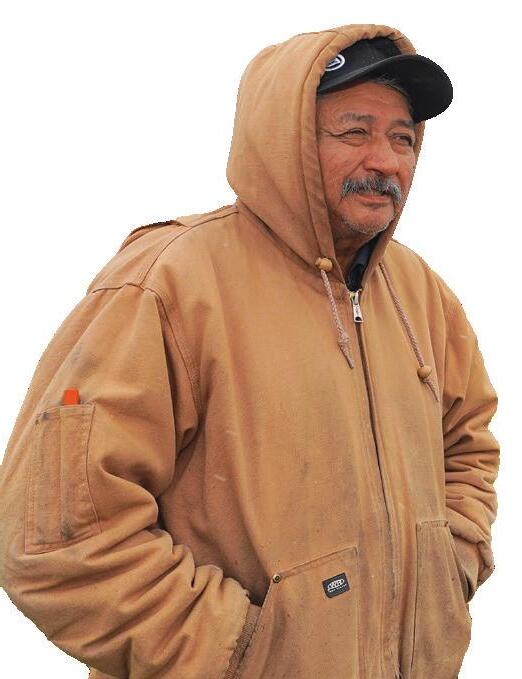
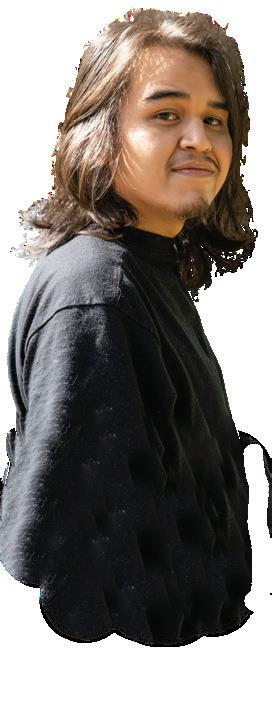




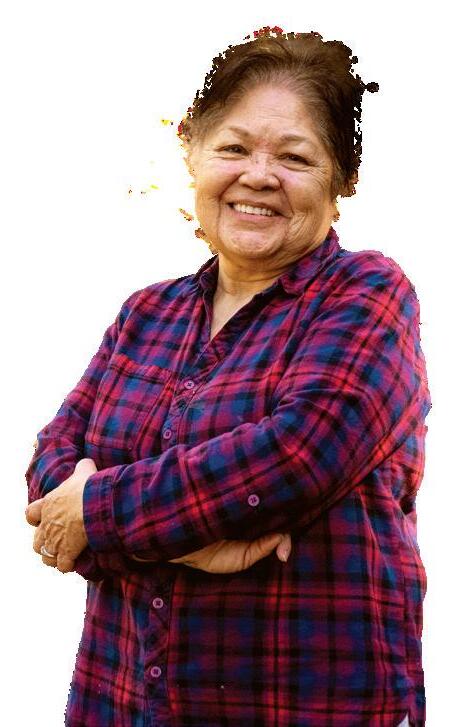
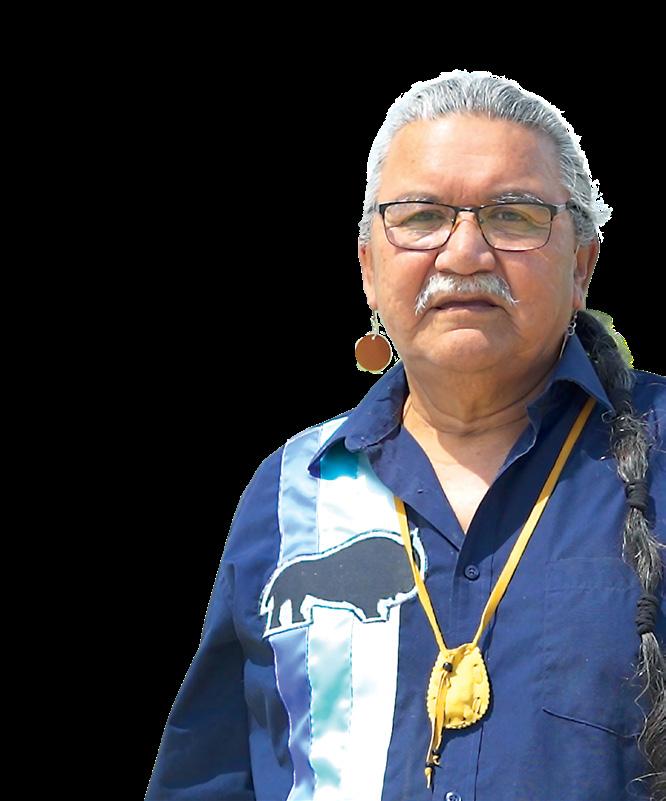

MARCH 7, 2024 First Nations Drinking Water SET TLEMENT CLAIMS MUST BE SUBMITTED BY www.firstnationsdrinkingwater.ca Free help with your Claim Form at 1.833.252.4220 Free wellness support at 1.855.242.3310 Free legal advice at 1.833.265.7589
In a fragile state
by Joshua Janke

Fire-ravaged habitats put pressure on vulnerable wildlife populations
The Cree and Innu nations came together in December to underline the fragile state of the caribou population and the impact that last summer’s wildfires will have on hunting in the region this year. As discussions continue to establish a Traditional Harvest Understanding, a joint statement underscored the need to curtail unauthorized hunting and guiding practices to allow animal habitats to recover in the coming months.
In a press release issued December 20, the Cree Nation of Eeyou Istchee and the Innu Nation united to denounce all unauthorized caribou hunting and guiding activities within Eeyou Istchee. The statement noted that a Traditional Understanding has yet to be reached – making it clear that hunters who are not beneficiaries of the James Bay and Northern Quebec Agreement are not authorized to harvest caribou and must adhere to Quebec laws and regulations intended to protect the region’s fragile animal ecosystems.
This collaboration reflects the commitment to address practices that threaten the caribou population. It also underlines the need for a united front in reaching a Traditional Harvest Understanding, so that responsible hunting and trapping traditions can continue.
Quebec’s vulnerable caribou population is declining, a situation exacerbated
by the extensive forest fires of 2023. The decline is particularly stark for the George River herd. Once thriving with over 800,000 animals in 1990, it is now reduced to just over 8,000 – a staggering 1% of its former population. This plight prompted a complete ban on hunting the George River herd in both Quebec and Labrador.
Similarly, the Leaf River herd, which exists predominantly in the Chisasibi region, has seen a significant drop in numbers since 2000. Despite stability in recent years at around 190,000, Quebec imposed a sport hunt ban on the Leaf River herd in 2018. This situation led to ongoing discussions among Cree Nations on how best to safeguard the caribou population while promoting sustainable management practices.
Additional concerns have surfaced over the ecological impacts of the wildfires that ravaged Eeyou Istchee.
Allan Saganash, a forestry consultant for Waswanipi, expressed his worry about the impact of the fires on the forest and wildlife. “I am a Cree hunter and trapper who is connected to the forest and wildlife,” said Saganash. “I am concerned with what we have lost to these massive forest fires.”
Waswanipi Chief Irene Neeposh echoed this sentiment. She emphasized the uncertainty surrounding the animals’ movements and the potential impact on the Cree way of life. “We have no clue
what we’re going to be left with, how long this cycle will be in terms of where the animals will flee to and when they are coming back,” said Neeposh.
Eliane Grant is a Cree biologist who worked almost five years for the community of Waswanipi. Grant highlights the ecological challenges arising from the extensive forest burn.
“The big game are able to travel far distances, so they could move away from the fire, or come back later, or find new habitats,” she noted. “But there isn’t a lot left, so they all have to go to the same space, to smaller habitats. They’ll congregate in small areas, [which] will be more dangerous for predation and hunters.”
Grant, who is finishing her master’s degree at the Université du Québec en Abitibi-Témiscamingue, pointed to the potential pressure on caribou as wildlife shifts northward due to the burned southern part of Eeyou Istchee. She noted that this “could put more pressure on the caribou we are trying to protect.”
In the face of these challenges, the Cree of Eeyou Istchee continue their dedication to environmental stewardship and cultural preservation. The ongoing discussions, damage evaluation processes, and collaborative denouncements will help navigate the complexities of ecological restoration and sustainable resource management.
www.nationnews.ca January 26, 2024 the Nation 7

Design Translation Hoodies Promo Items Printing Corporate & Event Materials Apparel T-shirts Backpacks Annual Reports 514-272-3077 info@beesum.com beesum.com We offer a wide range of services that can assist you in the growth of your business 8 the Nation
Lithium mining deal signed
On December 14, 2023, the Cree Nation Government signed the Kapisikama Agreement in regards to the James Bay lithium mine project.
Galaxy Lithium Canada wants to develop and operate an open-pit lithium mine about 100 kms east of Eastmain. The company entered an agreement with the Grand Council of the Crees (GCC), the Cree Nation Government (CNG) and the Cree Nation of Eastmain to undertake this project.
Eastmain is home to the headquarters for the Cree Regional Trappers’ Association, which supports trappers in sustaining their traditional practices. While the community may be receptive to economic growth, representatives have indicated a commitment to maintaining cultural customs. Though they aspire to long-term financial advantages, they still demand the protection of their traditional activities.
The Chief and Council of Eastmain expressed the community’s approval towards the lithium mine on November 22. Then, on December 6, the agreement obtained approval from the GCC and the CNG.
The Kapisikama Agreement aims to guarantee a mutually beneficial relationship between the Galaxy company and Eastmain. The socioeconomic advancement for the Cree is meant to remain sustainable throughout all phases of the project. The policy calls for the cooperation between the Cree and Galaxy in the environmental monitoring efforts. With these provisions in mind, the Eastmain community hope to obtain training, employment
Though they aspire to long-term financial advantages, they still demand the protection of their traditional activities
and business opportunities through this partnership.
Burning of Wounded Knee artifacts
halted
Over 150 repatriated artifacts from the 1890 Wounded Knee Massacre were set to be burned on December 29. However, leaders from the Cheyenne River Sioux Tribe and the Standing Rock Sioux Tribe intervened, calling instead for a ceremony of prayer, song and reflection to replace the destruction of these historical items.
The discussion surrounding the fate of items repatriated from the Woods Memorial
Library’s Founders Museum in Barre, Massachusetts, revolves around conflicting opinions within the community. While one faction of descendants had planned to burn the artifacts, others advocated for more time to explore alternative solutions to this sensitive issue.
In November 2022, the museum returned the stolen items to a group of descendants of Wounded Knee survivors called Si’Tanka Ta’ Oyate O’mniceye (Descendants of the Si’ Tanka Nation). The repatriated artifacts, taken from the mass graves of Wounded Knee massacre victims, include clothing such as moccasins and ghost dance shirts, peace pipes, hand drums, dolls, and beaded liz-
ard and turtle amulets/pouches containing umbilical cords. Since the return of the items, Si’Tanka Ta’ Oyate O’mniceye has conducted monthly public meetings, providing a platform for the descendants to discuss and decide the right course of action. Michael He Crow, a Lakota historian for the two tribes, revealed that the Cheyenne River tribe initially supported the plans to burn the items. However, on the eve of the planned event, the tribe’s chairman Ryman LeBeau called for the ceremony to be halted until all descendants had given their input and an agreement was reached.
www.nationnews.ca January 26, 2024 the Nation 9
In Brief
Cree artists will have a new Montreal space to exhibit and sell their work
by Will Nicholls
TArt Eeyou
he Cree Native Arts and Crafts Association (CNACA) recently got a shot in the arm as its proposal to open a store in Montreal met with success.
In December, CNACA and Wachiya (the store’s name and “hello” in Cree) participated in the Salon des métiers d’art du Québec at Montreal’s Palais des congrès in Montreal just before Christmas. They were the only
First Nations group to attend as presenters and salespeople.
Fast Cloud Inspirations, CreeAtions Jewels, Indigo Fox and LouisVincent Parent represented a few of the artists who will be a part of the new store that will be in Old Montreal on St. Paul Street near a Cree favourite, the Keg restaurant.
“The whole idea was to make a mandate of the James Bay and Northern Quebec Agreement a reality,” said former CNACA exec-
utive director and current OujeBougamau Chief Gaston Cooper. “We opened an online store, but the next stage was to open a store either in Quebec City, Montreal or Ottawa. We didn’t expect to do this so early. But I’m so proud that the CNACA staff seized this once-in-alifetime opportunity.”
Cooper added, “Crees have so much talent and we’ve made a place to sell it.”
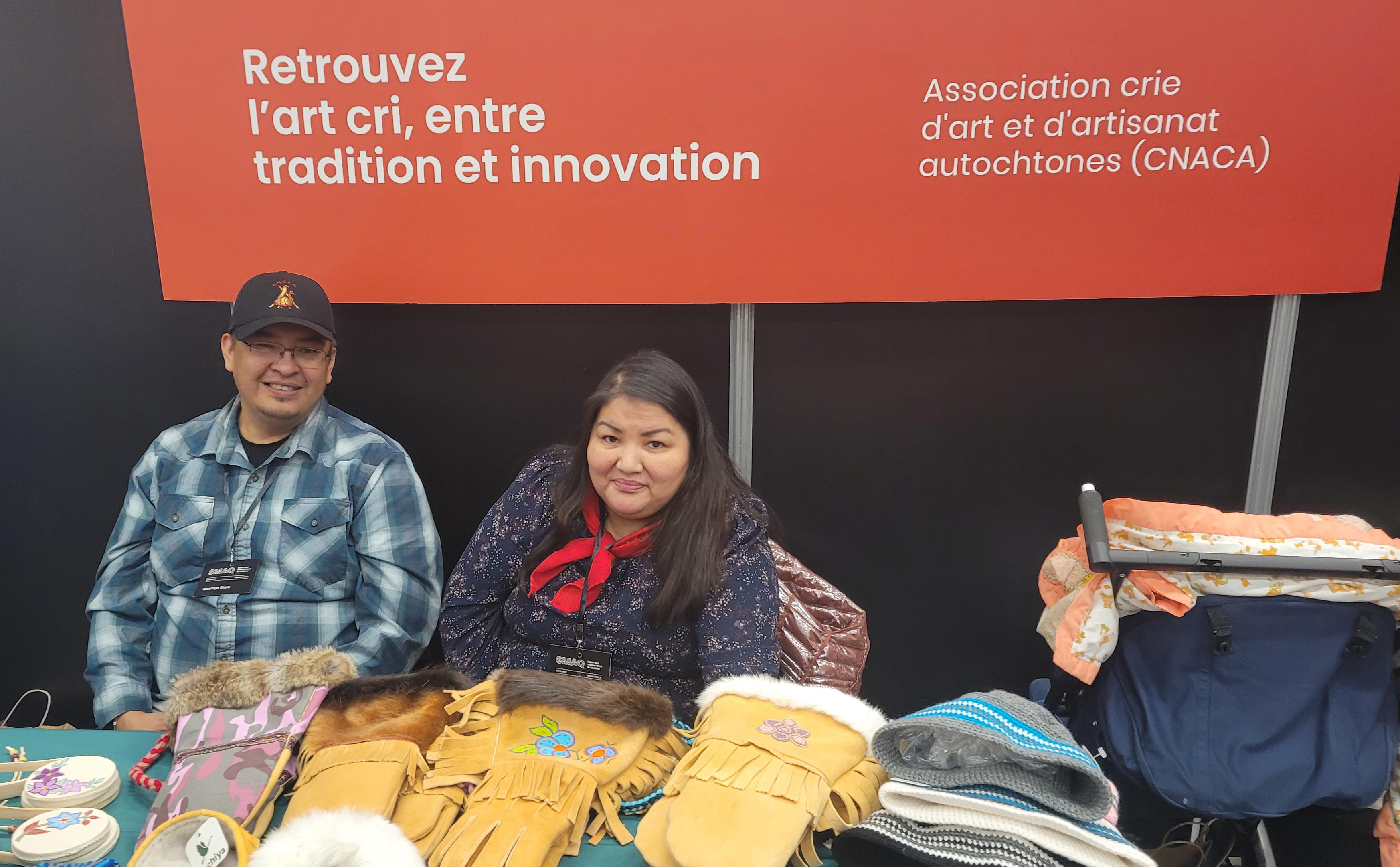

Istchee Features 10 the Nation
Rekindling Traditions
Two Cree artists who love to share their work with others
by Joshua Janke
Art is thriving in Eeyou Istchee thanks to talented individuals like Paula Menarick (Fast Cloud Inspirations) and Deborah Ratt (Cree-Ations Jewels), both of whom participated in the CNACA event in Montreal.
Paula Menarick
Paula Menarick’s affinity for traditional Cree and Inuit art and crafting traces back to her earliest memories, where she
watched with fascination as her mother, aunts and grandmother engaged in the meticulous work of bead and embroidery.
Menarick fondly recalls her elementary and high school years, stating, “I remember we had Cree culture classes. They would teach us to make bags, mittens, all sorts of crafts – but I found it very hard. I had such an admiration for it, but it took me a while to perfect my own skills and style. It wasn’t until the end of

high school that I developed a love for making art.”
After graduating from college in 2006, Menarick embraced her artistic journey, drawing inspiration from the very places where her passion first ignited. She reflects, “I haven’t stopped since, I sew and bead every day now.”
Menarick’s dedication to her craft has garnered her a substantial following, both on social media and within Eeyou Istchee, as well as internationally. In 2021, she received government grants and funding from Canada Council for the Arts to embark on a three-year moose mitten making mission.
“I began the moosehide mitten project during the Covid pandemic. Using four full moosehides from Eeyou Istchee, I proposed my project and was accepted. Basically, my plan is to make as many mittens as possible over a three-year period. This is all done with an emphasis on teaching others the skill.”
Menarick says that the project has not only increased her own art and teaching skills, but it has ensured that the traditional techniques she learned from her Elders

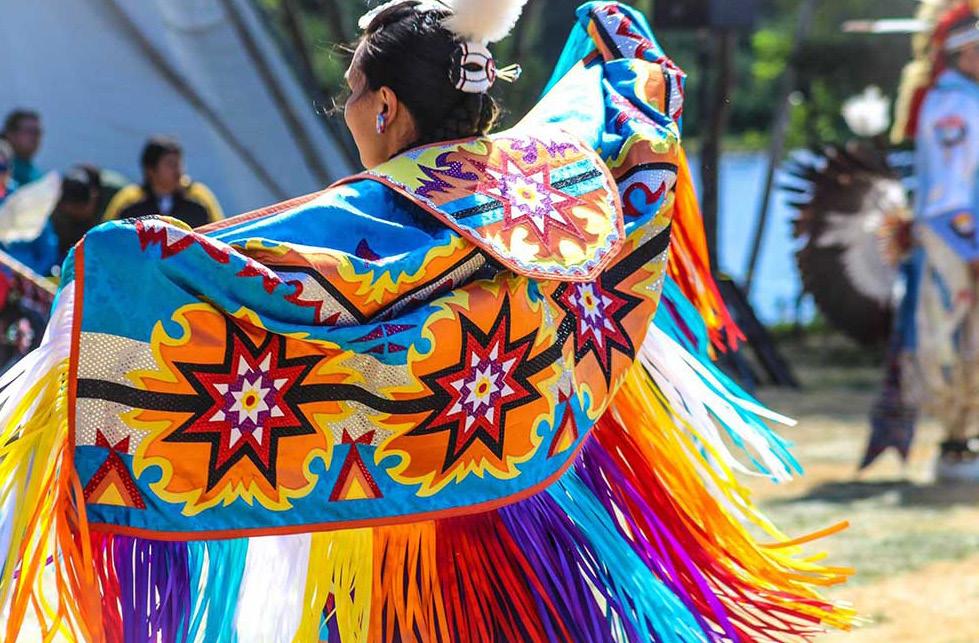
For Menarick, the key to art
creation is respect for all the aspects of the creation
are recorded and passed down to the next generations.
“Throughout the project, I am teaching on my Facebook page as I create so people can learn to make them as well. I want to keep this tradition alive. I’ve been posting instructional videos and sources so people can learn from me or from other artists.”
It’s been quite a success, Menarick adds. “I’ve had a person share a pair of mittens that she made, just from following my creation process over the years. It’s truly so beautiful to see.
“This is why I show every step in my lessons, from A to Z. I teach them the beadwork, the stringing, the cutting the moosehide, how to draw flowers and embroider a design.”
So far, Menarick has completed 14 pairs of moosehide mittens, with every step of their construction carefully documented through videos, pictures and her instruction. Additionally, Menarick does a mitten pattern giveaway on her website every month.
With the launch of her website in October 2023, Menarick notes a higher diversification in her clientele. “Even before the website, I was selling across Canada, with clients from Eeyou Istchee, Nunavik and Nunavut. Now when I share this art with the world, it’s not just about me, it’s about the traditions I am continuing.”
For Menarick, her creations are rooted in the Cree and Inuit traditions she learned growing up in Chisasibi. “Being Cree and Inuk, I have always had a respect for both
process
cultures. I tell myself that I must learn before I can create, so I can create out of respect. Art creation is about being inspired, respectful learning and expressing yourself to the world.”
She explains how tradition holds a pivotal role in her work. She consistently favours traditional methods and strives to use only materials from Eeyou Istchee, allowing her to reconnect with her first teachers, and make creations in their memory.
“Authentic material means so much to me. Lately, I have been going through boxes of beads my grandmother has saved and started using them in new projects. There is something special about continuing my grandmother’s traditions with the same beads that she first taught me with.”
12 the Nation January 26, 2024 www.nationnews.ca
Deborah Ratt


It’s been over five months since Deborah Ratt and I last spoke at the 33rd First People’s Festival in Montreal. Now, like old friends, we continued our conversation, delving into her commitment to community and the impact of traditional art she sees happening around her.
Reflecting on her role in the Vaudreuil-Dorion region and within Cree culture, Ratt says that for her “being a part of the Indigenous world is about helping other people.” She sees herself as a facilitator for others, underlining the importance of self-care and nurturing connections within the community.
“I am very open to finding ways that I can use my art to help others, whether it be giving out beading kits, or providing lessons. I feel strongly that sharing traditional culture goes beyond artistic expression, it has social-political implications as well.”
Ratt actively engages with the community, collaborating with associations like Cree Outfitting and Tourism, and the Waswanipi Women’s Association. As the founder of Cree-Ations Jewels, she expresses gratitude for being able to run a business while maintaining community involvement.
“I am so blessed to be a part of these organizations,” Ratt says. “It’s important to extend yourself as an artist into the community beyond the artistic realm, past your comfort zone.”

Ratt’s current focus involves finding ways to contribute to Indigenous women’s shelters, using her communication and teaching skills to present art as a catalyst for change within oneself.
Furthermore, Ratt says that “everyone is an artist” because we are all unique and essential to the community. “We each have our own way of doing things, just being alive and living life is a work of art. We should try to share our talents with each other, as well as our shortcomings – we can’t
do anything in this world alone. People need connections, and it’s wonderful what we can accomplish when we all get together as one,” she says.
“I see so many connections being developed through art in Eeyou Istchee, so what is stopping us from furthering these Indigenous connections and spreading them throughout the world?
“Sharing art internationally is so important,” says Ratt. “I want to engage with traditional African art, art from Arizona, and from around the world. There are so many books, artistic creations, and stories of hope to be shared amongst us.”
One of her artistic loves is traditional bead weaving, a skill that she now teaches. “Beading people are hard to find sometimes, but they are also easy to find because everyone can become a beader,” Ratt says with a laugh.
“Oh, I have a good story, it’s from a beading course I organized in 2018. I showed up and 80% of the participants were men – not exactly what you would expect. But you should have seen the beautiful designs and delicate bead patterns that they made. It didn’t matter that they had big hands or had never beaded before. I was so proud of them. It just goes to show how open we need to remain when working with others in the art community.”
“Anyone can do it – men, women, children, people with arthritis. I know people who have learned to bead with their feet,” Ratt adds. “Seriously, the more you look around, the more you see people who have found peace and positivity within art, and no one has a perfect path to finding that place.”
As the interview concludes, Ratt points out, just like in her work, our conversation is not ending. “I’ll see you soon, that’s what I always say. I don’t say goodbye because it’s not really goodbye, right? I say, see you soon because that’s what I mean.”
www.nationnews.ca January 26, 2024 the Nation 13





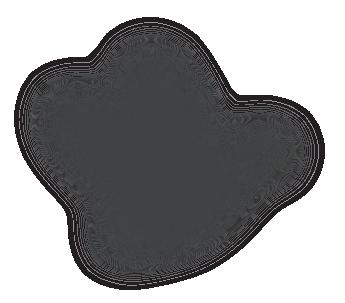


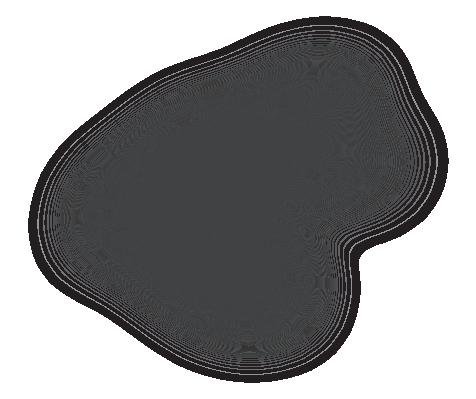
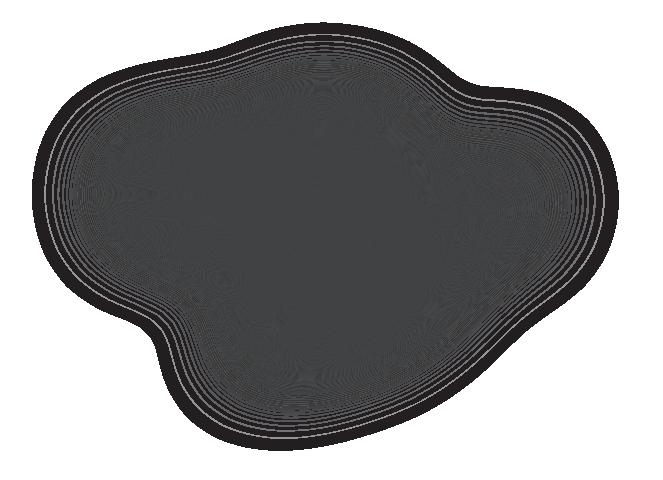

ouwahstore@gmail.com www.ouwahstore.com (514) 588-3162 18 Fort-George Road of promo items experience with certified PPPC suppliers of service in Eeyou Istchee A CREATIVE AGENCY WITH A UNIQUE PERSPECTIVE OUR NEW ADDRESS 4200 Boul. St. Laurent, #918 Montreal, QC H2W 2R2 514-272-3077 info@beesum.com beesum.com
A SCHOOL FOR AND BY FIRST NATIONS
A SCHOOL FOR AND BY FIRST NATIONS
First Nations Executive Education (FNEE) offers short leadership programs that have been developed specifically to meet First Nations needs.
First Nations Executive Education (FNEE) offers short leadership programs that have been developed specifically to meet First Nations needs.
PROGRAMS DESIGNED FOR CURRENT AND ASPIRING FIRST NATIONS LEADERS
PROGRAMS DESIGNED FOR CURRENT AND ASPIRING FIRST NATIONS LEADERS
› Elected officials and administrators
› Elected officials and administrators
› Entrepreneurs and business CEOs
› Entrepreneurs and business CEOs
› Managers, general directors and program directors
› Managers, general directors and program directors
› Women an d leadership
› Women an d leadership
› Economic leaders – Grand Circle (binome registrations)
› Economic leaders – Grand Circle (binome registrations)
ALSO AVAILABLE CUSTOMIZED PROGRAMS
ALSO AVAILABLE CUSTOMIZED PROGRAMS


DEVELOPED IN-LINE WITH THE SPECIFIC NEEDS OF INDIGENOUS AND NON-INDIGENOUS ORGANIZATIONS
DEVELOPED IN-LINE WITH THE SPECIFIC NEEDS OF INDIGENOUS AND NON-INDIGENOUS ORGANIZATIONS





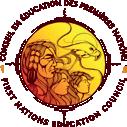






www.nationnews.ca January 26, 2024 the Nation 15
fnee.ca FOR MORE INFORMATION FOLLOW US SDG-31489
For and by First Nations Founding members Our partners Partner –Entrepreneurship programs Partner –Women and leadership programs With the financial participation of En partenariat avec :
fnee.ca FOR MORE INFORMATION FOLLOW US SDG-31489
For and by First Nations Founding members Our partners Partner –Entrepreneurship programs Partner –Women and leadership programs With the financial participation of En partenariat avec :
 by Allison Coon-Come
by Allison Coon-Come
Show up for
yourself
It is time to stop blocking our blessings and start enjoying them
Inertia is defined as a tendency to do nothing or remain unchanged. I personally call it my comfort zone. The thing with comfort zones is there won’t be room for growth and change. It can feel good to be comfortable but if the price is me staying the same then I’d rather get comfortable with being uncomfortable.
Finding your momentum in this world can be tough because it requires you to start moving. Moving away from your own comfort can be an experience that will feel like growing pains for the body, soul and spirit. Becoming and unbecoming all at the same time. It is a perpetual state of being.
It’s hard for me to see which way is up in all of this, but in therapy I’ve learnt to look at my growth as a spiral staircase. You come back around, but moving up or down is about how you handle the staircase of life. Each level gives us different perspectives and teachings. I learned it’s easier for me to help others, but helping myself is the actual lesson the universe wants me to learn.
I can’t help that I come from a community-based kind of love and support system. These parts come easy for me. Learning to harness that energy of unconditional love and support and direct it to myself is a new challenge.
The day my doctor called me out on this was a tough day. I

realized I show up for so many of my loved ones, but when it’s time to show up for myself it becomes hard. Frankly, I’d find every reason not to. To keep showing up for yourself in this life should be easy, but it isn’t for me. When I try and succeed, I become scared.
Fear of success seems funny to me, but it is a real fear of mine. Fear of success is a concern that once we achieve something new, we’ll be incapable of sustaining it or may suffer because of it. I got so used to failing, I even do it on purpose most times because of inertia.
In 2023, I started the process of showing up for myself. In art, in love, in my physical health, my mental health and even in my writing. As soon as the tides start moving in my favour, I become afraid. I self-sabotage as soon as I get a taste of the good life. I find my way back to fear.
Writing for example is a vulnerable task for me. A task I’ve always done in private. I have pages and pages of my writing collecting dust in my laptop. It feels like I’m baring my soul and standing naked in front of everyone who reads the words I’ve written. More people started reading my work and that did something for me. So, I have returned to writing.
For some success may bring happiness, but for me it has always brought anxiety and fear. I’m not used to good things happening
to me, so I unintentionally block my blessings because of that. I’m aware of this part of myself now and this year I’m learning to correct it.
Despite fear, I will keep showing up for myself. I will keep trying and putting myself out there and accept the blessings that come with it. Accepting happiness is not an easy feat for me. However, I will dance, love and continue my creative endeavours, because I deserve a good life and all the good that comes knocking at my door.
Giving yourself permission to live in joy and in light is another form of showing up for yourself. I grant myself the grace and compassion to keep going in my journey of becoming and unbecoming towards who I am meant to be in this world. To stand tall in the light and be a source of good that this world needs more of. To smile and reclaim my power. To be my own cheerleader.
A lot has happened to me in 2023 and I know a lot will continue to happen to me in 2024. So, I’ll be ready to hold myself accountable and let myself enjoy life’s blessings, lessons and everything in between. May we show up for ourselves as we show up for others. May we love ourselves as we love others. May we encourage ourselves as we encourage others.
Let’s stop blocking our blessings and start enjoying them together.
Finding your momentum in this world can be tough because it requires you to start moving.


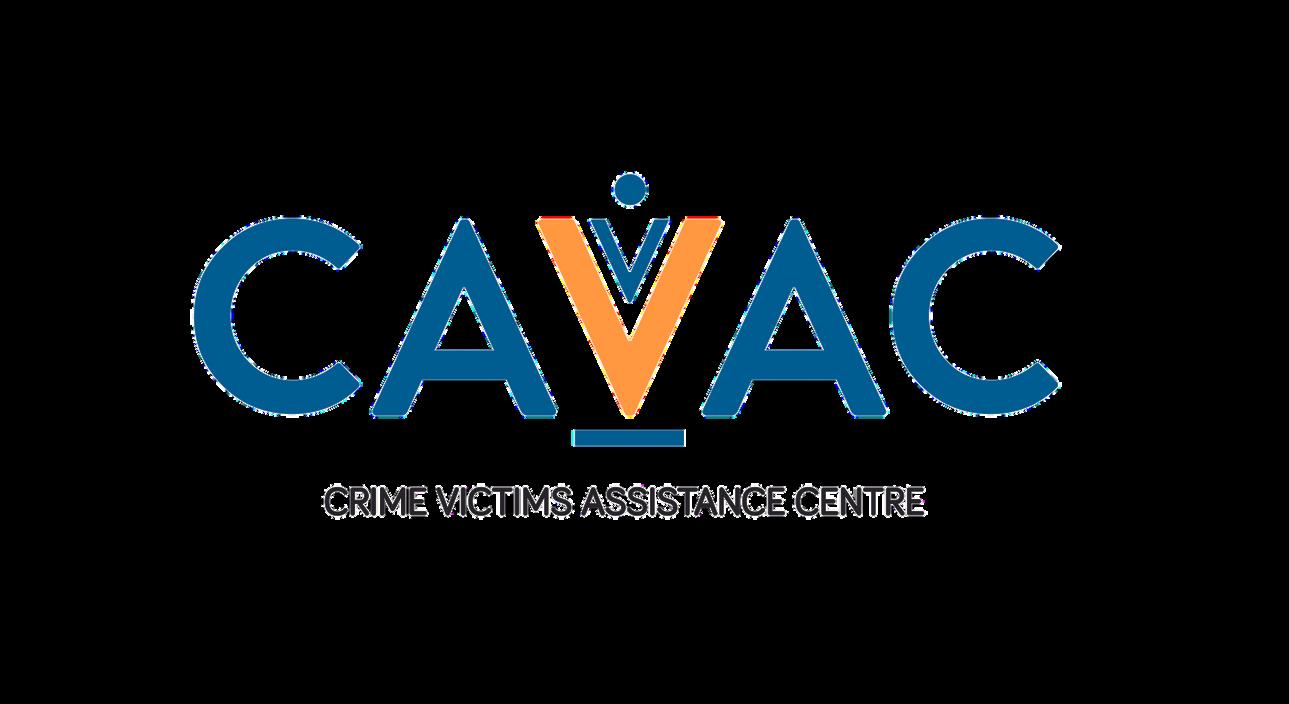


18 the Nation January 26, 2024 www.nationnews.ca 1-877-342-2822 Are you a victim or witness of a criminal act? We are here to support you Our services are offered throughout Eeyou Istchee and are strictly confidential C A L L U S A program offered by: ᐃᔨᔨᐤ CAVAC ᐋ ᐱᒥᐱᔨᐦᑖᑭᓂᐧᐃᒡ THE NATION WEBSITE HAS MONTHLY 10,000 READERS GET A WEB SPACE NOW


Voices of resilience
Four Cree creators shaping Eeyou Istchee’s narrative
by Joshua Janke
As we step into 2024, Eeyou Istchee is set for a year filled with stories that will define and unite the nation. But who will be the ones that choose to commit their time and skills to share these stories with the world?
We spotlight four remarkable Cree creators whose contributions in journalism, literature, podcasts and student activism are shaping the narrative of the Cree community. Nikki Baribeau, Liam Swallow, Connie Walker and Nick Wapachee stand at the forefront, using their unique talents to amplify Cree voices, share stories and initiate change.
These four individuals epitomize the spirit of resilience and creativity within the Cree community. Through their contributions, they not only celebrate the richness of Cree culture but also inspire the next generation of storytellers.
Nikki Baribeau
Nikki Baribeau, a self-published author from Mistissini, uses her written words to bridge generational gaps and spark conversations about Indigenous history. Her children’s storybook, The Truth About My Education, delves into the James Bay Cree experience with residential schools. In her next book, Jiwehdao – Let’s Go Home, Baribeau will address the issue of missing and murdered Indigenous women, as she wants to encourage readers to reflect on critical topics.
“Although my target audience for my first book is school-aged children, I would like for everyone to read it and start asking questions and take an

interest in Indigenous history,” says Baribeau. “We are living in a time where our Elders who were witnesses to the Indian Residential Schools are slowly leaving this earth.”
Illustrated by Cali Parrish, Baribeau’s first book concerns a grand nephew, who goes on an illuminating fishing trip with an Elder. Through intimate discussions regarding the young boy’s school anxieties and the Elder’s past, the book narrates a combination of experiences that generations of children from Eeyou Istchee have faced.
The story is not one specific person’s experience, explains Baribeau. “My book’s purpose is to get people talking about the past with younger children. It is important for children to understand the past so that they can develop a deeper understanding of how things got to how they are today.
“Children who are raised in the communities know only what they see and not how it all began. Trauma is a destroyer that latches on to souls for generations. In order for our people to understand and then overcome the vicious cycle, they need to know where it all began.”
Beyond her publications, Baribeau actively engages with Cree communities through book tours, providing les-
sons on Indigenous history to schoolchildren. Baribeau believes in creating a strong presence of Indigenous perspectives in education.
Liam Swallow
Liam Swallow, a 14-year-old from Mistissini, stands as a beacon of youth activism against violence, theft and vandalism in Eeyou Istchee. As a Grade 8 student and a newly elected member of the youth council, Swallow uses social media to draw attention to the escalating issues affecting his community and the region.
In a powerful Facebook post, Swallow calls for unity, emphasizing the need to address violence, vandalism and bullying. He believes that the youth, as the future leaders, should take a stand against these issues. The post, which went viral and has been shared over 100 times, reads:
“Ok Eeyou Istchee. This is too much. We need to stop throwing violence & vandalism under the carpet. It’s time we stand together and say it. VIOLENCE NEEDS TO STOP. VANDALISM NEEDS TO STOP. People are tired, people are sick, people are stressed. People don’t feel safe in their homes. We can’t always depend on our leaders. We can’t always depend on our police. We
20 the Nation January 26, 2024 www.nationnews.ca
Nick Wapachee
Community
can’t blame the police. We need to stand together and protest against this. Especially in schools. Bullying is also an issue in schools. Violence is affecting other communities. There are so many things we need to speak out against. I’m willing to do a speech in front of Mistissini and other Cree communities.”
Swallow’s initiative also garnered national attention from journalists and support from community leaders, highlighting the potential impact of youthled conversations.
“Things are really getting out of hand … Things have really gone too far and people are stressed. People are tired. People are sick. People don’t feel safe in their homes,” Swallow told the CBC in an interview following his post.
Chief Michael Petawabano of Mistissini was one of the people who shared Swallow’s Facebook post. He salutes the teenager’s effort to speak up. “As much as possible, it takes people [who do] what Liam did, a young guy standing up and saying, ‘Let’s stop this, let’s address this,’” said Petawabano.
“Eeyou Istchee needs to stand together. Not apart from each other,” says Swallow.
“The youth and the people should really stand together [...] because we’re the future. We’re going to be future chiefs, we’re going to be future police officers and commissioners.”
Swallow plans to lead a march in Mistissini as well as organizing public speeches against violence and vandalism in other Eeyou Istchee communities.
“I want to start a campaign against vandalism and the violence. I just want to walk into the streets and get attention to stand together as one,” he says.
Nick Wapachee
Nick Wapachee, a multimedia journalist based in Toronto, is on a mission to preserve Cree language and culture through his podcast, In Eeyou Istchee. Born in Nemaska, Wapachee believes in giving back to his community by ensuring the preservation and maintenance of the Cree language. His podcast features interviews and discussions on all things Cree.
“The interest is in the Cree Nation of Eeyou Istchee. It is speaking with individuals in their community. The language has similarities with other nations, which means the podcast can extend to the Innu and Atikamekw communities.”
By sharing the stories he collects, Wapachee says his goal is to unite the Cree Nation and encourage future generations to speak their language.
“Canadians may not see what I see and the rich stories they bring, but I want to channel the stories of my Elders, youth, men and women using our language,” he says. In this way, Wapachee wants to establish “an online Cree community that engages and grows with the community by providing the highest quality content that gathers thoughts, ideas and sounds about Cree affairs.”
Wapachee hopes that in the future, “The podcast series will expand to a dedicated Cree listener base that will embrace and support In Eeyou Istchee because they feel their lives are enriched, entertained and improved.”
In order to accomplish this aspiration, the podcast’s mission is “to strengthen and enrich the Cree communities with a podcast that is real, fresh and promotes Cree diversity, respect and freedom of expression.”
Connie Walker
For over two decades, Connie Walker has established herself as an acclaimed journalist. Witnessing the underrepresentation and misrepresentation of Indigenous stories in her youth led Walker to journalism.
“The stakes are too high when journalism fails in their representations of Indigenous people,” says Walker, a former CBC journalist who hails from the Okanese First Nation in Saskatchewan. “Indigenous stories must be told by Indigenous individuals themselves.”
Journalism, she says, is an ideal medium for establishing Indigenous cultural sovereignty in Canadian media and politics.
With a deep understanding of the stakes involved, Walker emphasizes the importance of Indigenous individuals telling their own stories. In a 2021 lec-
ture, “Exposing the Truth: Journalism’s Role in Reconciliation,” she advocates for the empowerment of Indigenous journalists.
“We must be supported, resourced and empowered by their communities and people. It’s worth it because we bring with us a unique set of lived experiences and perspectives that are crucial for understanding the realities that Indigenous people live in Canada, and how that connects back to aspects of our shared history that Canadians are just beginning to understand.”
Walker reflects on her own journey, inspired by the tragic story of Pamela George – an Anishinaabe woman beaten to death by two white men in Regina in 1995 – and how overcoming early discouragement led her to become a voice for Indigenous communities.
“When I learnt about Pamela George, that was the first time I thought about becoming a journalist,” says Walker, recalling the fear and lack of confidence she felt as a young Indigenous writer.
There was no specific moment when Walker realized she had become a journalist. Instead, she says that it was during interviews and fieldwork that she realized she was in the right place and doing the right thing with her storytelling.
“I don’t think there was ever a conscious decision. Once I started taking them on, I felt like, ‘Yes, this is why I’m doing this.’
Walker sees covering Indigenous stories as a way to reconnect with her history while rejuvenating her own identity.
“You can’t underestimate how important and vital it is to see yourself in stories, to see yourself in media, to see yourself respected. Because that’s what it is. It’s a sign of respect when you’re given the space to share your story and you’re giving your space to talk about what you care about.”
By bringing Indigenous perspectives to the forefront, Walker believes journalism can lead to a deeper understanding of shared history and foster reconciliation. It “can actually help us get closer to the truth,” she says.
www.nationnews.ca January 26, 2024 the Nation 21



CONTACT YOUR LOCAL COURTHOUSE ON HOW TO APPLY: Chisasibi: Eastmain: Mistissini: Nemaska: Ouje-bougoumou: Waskaganish: Waswanipi: Wemindji: Whapmagoostui: WE CAN HELP YOU! If you are a Cree beneficiary, the Cree Nation Government (CNG) can help you to fill out the record suspension application and if you qualify for financial assistance, the CNG may pay the costs associated with the application If you have any additional questions, please contact the Correctional Services Regional Office in Val d’or 819-874-2600 or by email at justice.valdor@cngov.ca. 819-855-2120 819-977-2400 418-923-2661 819-673-2400 418-745-2260 819-895-2126 819-753-2770 819-978-3300 819-929-3796 STRUGGLING WITH A CRIMINAL RECORD? HAVE YOU COMPLETED THE REQUIREMENTS OF YOUR SENTENCE AND PROBATION? YOU MAY BE ELIGIBLE FOR A PARDON THAT SEALS YOUR RECORD

If you are an Indigenous woman of Eeyou Istchee and you are seeking safety and support, we are here to help you! creehealth.org/services/womens-shelters-robins-net Pîpîchâu Uchishtûn | Robin’s Nest | Women’s Shelter For women and children of Eeyou Istchee suffering from domestic violence 1 855 753-2094 CRISIS LINE Toll Free | Open 24/7 HELP ᐐᒋᐦᐄᐙᐅᐎᓐ WÎCHIHÎWÂUWIN HELPLINE If you need emotional support or to learn about all the services available to you, please contact us: 1 833 632-HELP (4357) creehealth.org

Puzzles
Here’s another edition of the Nation’s puzzle page. Try your hand at Sudoku or Str8ts or our Crossword, or better yet, solve all three and send us a photo!* As always, the answers from last issue are here for you to check your work. Happy hunting.
Crossword by Margie E. Burke

PREVIOUS SOLUTION:
Solution to Crossword:

24 the Nation January 26, 2024 www.nationnews.ca
Copyright 2024 by
Puzzle Syndicate
The
L A M B C A W S B A S E D A G U E O L I O E R O D E M E C H A N I S M S T A G E A S K E D B E E K E E P E R R A D I I T I E R L O A D E D V I N C I B L E I L K D E N I M H A R E M E D I T A U G E R L O V E G E N R E M O S E S W E N E N G E N D E R S T O N E D S T A R S T E P S C A R P E D I E M R E T R O O C E A N C L E A N R O O M W H I S T A L L Y A N T E S E N S E L A T E S E E N 5634 8 463 83 75 4 26 9 8 96 4 3 5 1 © 2024 Syndicated Puzzles 9782 43 794 376 2175 768 139 38 6138 © 2024 Syndicated Puzzles 453178962 296435871 718926354 624859137 389217645 571643298 147362589 865791423 932584716 STR8TS No. 690 Easy 238976 4236897 35142768 4321765 51324 6785423 67845312 7896354 896743 5 1 9 How to beat Str8ts –Like Sudoku, no single number can repeat in any row or column. But... rows and columns are divided by black squares into compartments. These need to be filled in with numbers that complete a ‘straight’. A straight is a set of numbers with no gaps but can be in any order, eg [4,2,3,5]. Clues in black cells remove that number as an option in that row and column, and are not part of any straight. Glance at the solution to see how ‘straights’ are formed. Previous solution - Medium SUDOKU To complete Sudoku, fill the board by entering numbers 1 to 9 such that each row, column and 3x3 box contains every number uniquely. For many strategies, hints and tips, visit www.sudokuwiki.org If you like Str8ts check out our books, iPhone/iPad Apps and much more on our store. The solutions will be published here in the next issue. You can find more help, tips and hints at www.str8ts.com No. 690 Tough Previous solution - Medium
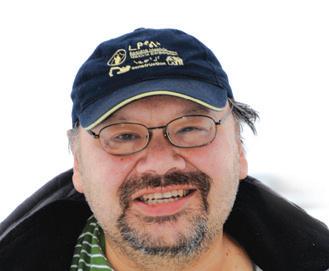

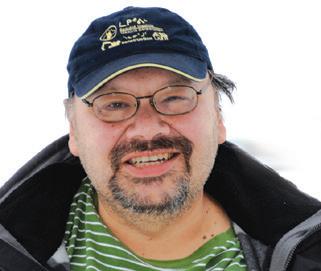
TThe white chicken of the North Rez Notes
by Sonny Orr
he men all gathered in the evenings. The smoke from pipes lit after a fine supper filled the tiny room. No one had much to say. The black hard tobacco was satisfying to the palate after a lengthy meal of beow bangeek, or ptarmigan pancakes. The night before, smashed stomach and heart soup with smoked ptarmigan breasts dipped in bear grease came a close second for that belly ache, after a long day outdoors tending to the ptarmigan nets that scattered the willows surrounding Great Whale River.
The evening debate was quickly settled as the number one recipe for cooking the willow ptarmigan was voted on. This scene was typical 100 years ago and was repeated every winter for as long as there was tobacco to smoke and ptarmigan to harvest.
Jump to the 21st century, the ptarmigans have returned in numbers that can only be described as astronomical in scope. They have flocked to the skies in such numbers that the tactics for the hunter have been reduced to drive-by hunting outside of town, while in-town hunting is by slingshot, which is less dangerous than firing a shotgun in your backyard every few minutes. Yes, the use of the childhood weapon of choice is back, the venerable stone propelled by the natural rubber of an inner tube. Remember those things, they were inside a tire before the tubeless ones were
invented. This was the choice of many a marksman (marksperson) when it came to urban hunting.
Today, the social lament is how to capture those flying lumps of protein without using anything made of steel, lead or depleted uranium for the pellets used in shotgun shells. As our ancestors used to argue about, why waste good lead on a bird that is so easy to catch.
Back in the day, the nets crisscrossed the willow patches that grew abundantly in the lands surrounding the tiny villages. The bird provided daily sustenance for our cooking pots and would be harvested right after being caught so that its succulent meat was still warm and its feathers easier to pluck. On average, it took about 30 seconds to clean a bird and about the same amount of time to gut and cut it up according to the way the men had decided the day before over a few pipes and teas.
The ladies who worked as cooks for everyone had a special long thumbnail that they sharpened daily so that they could butcher the small birds with ease. A bird could be processed in about a minute, from just harvested to ready for the cooking pot.
Today, it takes about 10 minutes per bird, and a few more to stuff them into a plastic storage bag ready for the freezer for future eating.
Families are now returning to the ways of our ancestors and contemplating bringing back land nets to capture the birds – as it was in the past has become today’s mantra. Who can get me shotgun shells that are light enough not to rip apart the delicate flesh and with enough pellets to knock down a few at a time to save on buying more shells?
The slingshot is starring in social media and making a great comeback. The need to gather stones for projectiles is becoming a summer event. Picking and storing enough smooth stones to make up for a 10% average hit-to-miss ratio, so 10 stones equal one dead ptarmigan. Unless you are well schooled in the silent way of hunting, which just so happens to be fun and very affordable, and with the added bonus of hunting in your backyard. The methods have shifted from hunting on mass and netting thousands daily to drive-by hunting to backyard hunting.
All we need now is a 1000-page cookbook with all the recipes our ancestors would argue about and settle on the best ones, the ones that will make it onto video and finally onto our supper plates. As it was in the past, the days were filled with the same thing to eat every day, cooked in different ways, and varied enough so that our palates would never tire of the white chicken of the North – the ptarmigan.

www.nationnews.ca January 26, 2024 the Nation 25
T T T

Make housing a priority in 2024
by Maïtée Labrecque-Saganash
Youth everywhere in the country are in the trenches and will most likely continue to struggle in 2024. Canada is currently facing a housing crisis marked by soaring prices, limited affordability and growing homelessness. The situation is most pronounced in major cities where many of our youth have to relocate and where housing demand has outstripped supply, creating a substantial affordability gap. Younger generations find it challenging to become homeowners due to high down payment requirements and escalating mortgage costs and interest rates.
The rental market is not exempt from challenges. The average rent for an apartment in Montreal increased by 8.5% in 2023 and by 16% in Gatineau, affecting Crees who have left the region because of school or because of the lack of housing in communities. Even municipalities near inland communities, like Chibougamau, have vacancy rates below 0%, and are unable to house the number of people who have moved out of the communities.
In Chibougamau, most of the homeless folks are Crees.
Shortage of affordable rental units has intensified the struggle for Canadians to find suitable housing, leading to higher rents and housing insecurity. Homelessness rates have concurrently risen, with visible increases in individuals and families lacking stable housing. The profile of people experiencing homelessness is changing. We tend to picture the stereotypical homeless person as someone who battles mental health issues and disabilities. But this doesn’t reflect the reality in homeless shelters, where we are seeing more families, more employed individuals on minimum wage, and more youth.
The challenges I listed are particularly pronounced for those in entry-level jobs or precarious employment situations as limited job security and lower wages can exacerbate difficulties in saving for down payments or meeting rent obligations,
Making the housing crisis a priority is a key element to our future economic growth and self-determination

amplifying the struggle for housing stability among the youth demographic.
If the situation persists, it won’t only impact individual aspirations for youth but also the broader social and economic fabric of the country, including our Cree communities where more than 50% of the population are below the age of 35.
Making the housing crisis a priority is a key element to our future economic growth and self-determination. Bands and entities should stop jeopardizing young people’s livelihood and stop treating the youth as a fringe demographic in their budget planning.
Housing is a human right and a social determinant to health. You cannot thrive in education, career and goal setting without stable and proper housing. Housing is at the root of everything.


26 the Nation January 26, 2024 www.nationnews.ca
Tea & Bannock T&B

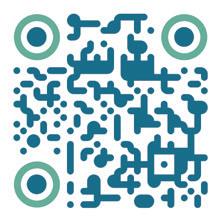
WINTER ACTIVE Be Let’s Build a Strong and Healthy Cree Nation For more information about Winter Active across Eeyou Istchee, contact: WALLY RABBITSKIN PPRO Physical Activity, Public Health (CBHSSJB) Phone: 418-923-3355(x42365) Cell: 418-770-3975 wrabbitskin@ssss.gouv.qc.ca JANUARY TO MARCH 2024 MOVING OUR BODY HELPS US Physically + Mentally + Emotionally + Spiritually creehealth.org/winteractive


We offer discounted rates and seat sales. For information, reser vations, or charters call: 1-800-567-6567or visit: www.aircreebec.ca Your Northern Airline of Choice






































































 by Allison Coon-Come
by Allison Coon-Come



























